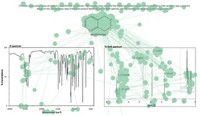Advertisement
Grab your lab coat. Let's get started
Welcome!
Welcome!
Create an account below to get 6 C&EN articles per month, receive newsletters and more - all free.
It seems this is your first time logging in online. Please enter the following information to continue.
As an ACS member you automatically get access to this site. All we need is few more details to create your reading experience.
Not you? Sign in with a different account.
Not you? Sign in with a different account.
ERROR 1
ERROR 1
ERROR 2
ERROR 2
ERROR 2
ERROR 2
ERROR 2
Password and Confirm password must match.
If you have an ACS member number, please enter it here so we can link this account to your membership. (optional)
ERROR 2
ACS values your privacy. By submitting your information, you are gaining access to C&EN and subscribing to our weekly newsletter. We use the information you provide to make your reading experience better, and we will never sell your data to third party members.
Analytical Chemistry
Proton NMR without Deuterated Solvents
Team spreads the word that usable spectra can be obtained using regular organic solvents
March 22, 2004
| A version of this story appeared in
Volume 82, Issue 12
What synthetic chemist hasn't wistfully lingered over a reaction flask, longing for a simple, informative way of following the chemistry without exposing sensitive reagents to air and moisture? A group led by University of Minnesota chemistry professor Thomas R. Hoye contends that chemists already have the technology to do just that--most just haven't been using it.

Hoye calls the technique No-D NMR, short for no-deuterium proton nuclear magnetic resonance spectroscopy [Org. Lett., 6, 953 (2004)]. As the name implies, the technique involves taking NMR spectra of reaction mixtures or reagent solutions in standard organic solvents, rather than protium-free solvents such as CDCl3 and CCl4 that are commonly used for NMR spectroscopy.
When they hear about his work, Hoye says, chemists always ask the same question: Won't the solvent peaks be so large that they swamp any signals from the product?
"That's the mental block that all of us have," Hoye answers, but it's just an old chemists' tale. Modern NMR spectrometers are sophisticated enough to detect minor chemical components in a sea of solvents. Hoye says one need only expand the vertical scale of No-D NMR spectra to see that this is so. Indeed, in a No-D spectrum of phenyllithium in benzene, the ortho, meta, and para protons of the aryl lithium species can be easily distinguished from the solvent.
Hoye doesn't want to imply that this is a new concept. Scientists who study biological macromolecules routinely use a H2O/D2O mixture as an NMR solvent. And it's quite common to take the spectra of nuclei other than protons, for example, 31P and 19F, in nondeuterated solvents.
"Ten percent of the folks reading this are going to say, 'I've done this before, I don't see what the big deal is,'" Hoye admits. But he hopes that the report will be an eye-opener for the other 90%. "One can think about this as in situ NMR. You can do this for every reaction, if you want. In our lab, we're running No-D spectra on a daily basis."
While he emphasizes the No-D technique's utility, Hoye is also quick to point out that deuterated solvents are still de rigueur for characterizing final products in his lab. "I'm not trying to put Aldrich or Cambridge Isotopes out of business," he jokes.
Of course, to use the technique effectively, one must master a few tricks. These, Hoye insists, are easy to learn, and the group wrote the paper in part to provide some guidance.
They have had the most success when a solution's concentration falls within the 0.1 to 1 M range. Solvent suppression programs can improve the spectral quality of more dilute samples.
Also, data acquisitions have to be taken with the spectrometer in the unlocked mode because, without deuterated solvents, there's no deuterium for the instrument to lock onto. Hoye says this isn't a problem for most modern NMR spectrometers. As long as the magnet doesn't drift substantially, running in unlocked mode should still give narrow peaks.
Hoye adds that the art of learning to reliably shim a No-D sample is like learning to ride a bicycle: "At the beginning, the data may not be pretty." But with a little practice, it becomes no more difficult to shim No-D samples than it is to shim an analogous deuterated sample. Shimming involves adjusting the magnetic field homogeneity to obtain narrow, well-shaped peaks.
Chemists can use a sealed reference tube of deuterated solvent as "training wheels" to lock and shim upon before acquiring data from the No-D sample. The report also includes a substantial footnote with shimming advice. "People who have just read the footnote have had tremendous success with the technique," Hoye says.
AFTER HEARING Hoye lecture on the subject, Brian L. Pagenkopf, a chemistry professor at the University of Texas, Austin, had his students try out the technique. They found it "extraordinarily easy to master," Pagenkopf says. "Students with minimal NMR expertise can routinely acquire high-quality No-D 1H NMR spectra in just a few minutes.
"As a means for monitoring reaction progress, No-D NMR complements traditional gas chromatography and thin-layer chromatography techniques because reactive intermediates, such as metal enolates, can be measured directly. No-D NMR has helped us to solve a variety of problems more quickly and cost-effectively than would have been possible from indirect methods such as traditional chemical functionalization."
The idea occurred to Hoye while his group was studying a high-molecular-weight polymer that carried a functional group on one end. Despite the large number of protons in the molecule, 1H NMR could still be used to observe protons near the functional group. After that, it was just a short leap to realizing that it didn't matter if those hydrogens were part of the molecule or part of the solvent.
The Minnesota chemists say the technique is equally useful when it comes to analyzing commercially available solutions. They plan to publish a report describing how to use the technique to determine the concentration of organolithium reagents in solution.--BETHANY HALFORD






Join the conversation
Contact the reporter
Submit a Letter to the Editor for publication
Engage with us on Twitter